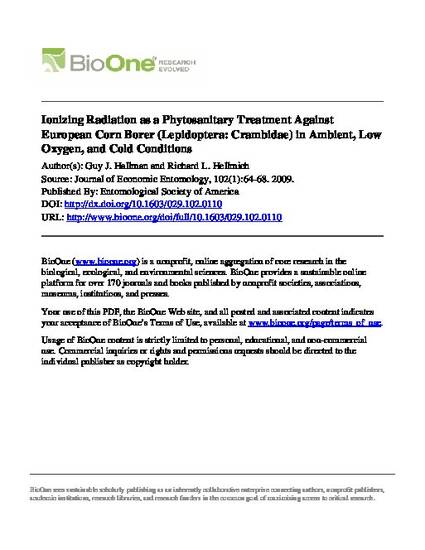
The European corn borer, Ostrinia nubilalis (Hübner) (Lepidoptera: Crambidae), is a quarantine pest for several fresh commodities, including corn-on-the-cob, bell peppers, and green beans. Methyl bromide fumigation is the usual phytosanitary treatment, but the fumigant is under increasing regulation as a stratospheric ozone-depleting substance. Ionizing radiation is a relatively new commercial alternative that is currently used in several countries. The present research explored radiation doses that would provide quarantine security for commodities at risk of being infested by O. nubilalis. Radiotolerance of late pupae (the most tolerant stage infesting commodities) as determined by hatch of F1 eggs was not affected by host (meridic diet versus ear corn) or temperature (1 versus 13°C) but was positively affected by low oxygen. Longevity was shorter for adults of irradiated than nonirradiated pupae. The minimum absorbed dose for phytosanitary irradiation against O. nubilalis could vary from 233 Gy for prevention of F1 pupation to 343 Gy for prevention of F1 egg hatch. Lower doses might be possible if greater risk of treatment failure was acceptable.
Available at: http://works.bepress.com/richard_hellmich/52/

This article is from Journal of Economic Entomology; 102 (2009); 64-68; doi: 10.1603/029.102.0110